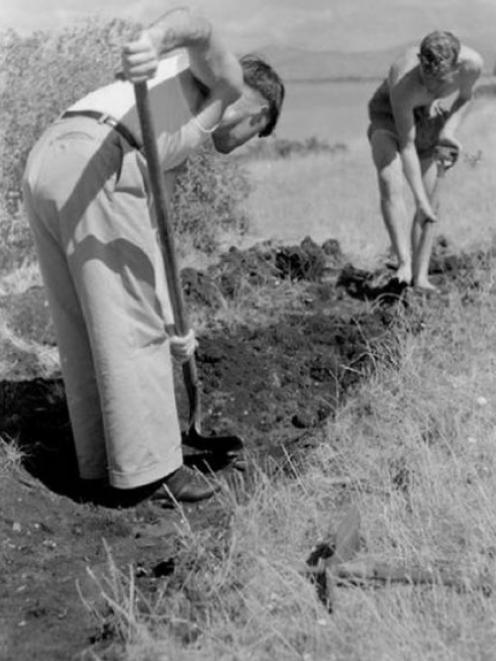
The Wairau Bar, a windswept wedge of grass and gravel off the Marlborough coastline, has been one of New Zealand's most important archaeological sites since relics uncovered there were found to have come from what were likely our first human inhabitants.
Successive studies have put their arrival at the bar, which at that point would have been a scrub-covered island, at some point between 1288 and 1300.
Now, two Victoria University archaeologists have uncovered evidence of earthquakes and tsunamis at the site over past centuries - some which may have killed some of the people once living there.
Dr Bruce McFadgen and Associate Professor Peter Adds' study, just published in the Journal of the Royal Society of New Zealand, also highlighted concerns that sea level rise from climate change could threaten secrets yet to be uncovered at the site.
They are planning a programme to monitor current and future site degradation from natural processes.
The authors said there had been at least four earthquakes at the bar large enough to have changed the landscape – transforming the site from an island to part of a boulder bank – as well as the surrounding area.
The site had also been ravaged by three tsunamis – including one 1855 event that was large enough to have knocked down several buildings, stranded fish and lowered the land and nearby lagoons by one to two metres.

"The archaeological significance of these events relates to their possible effects on the site's inhabitants, and on how the communities living on the site adapted to the earthquakes and tsunamis that impacted the site and local environs," they wrote.
"The tectonic processes thus have implications for possibly enhancing the interpretation and understanding of the archaeology of the site, both for the remains that have already been recovered, as well as those that may be recovered during future work on the site."
The location of New Zealand across an active tectonic plate boundary meant that earthquakes and tsunamis had a long history of affecting people in New Zealand, and many had been recorded orally by Maori, they said.
"There is thus scope for earthquake archaeology and tsunami archaeology to be developed as subdisciplines in New Zealand: first, to examine how people responded in the past to tectonic events; and, second, to provide information relating to the study of tectonic events generally in New Zealand."
However, the combined threats of earthquakes and future sea level rise meant the site might not exist by the end of the century.
They concluded there was a need for monitoring of erosion of the site, and for a research strategy planned with Rangitane iwi to obtain data from the site before it was lost.












